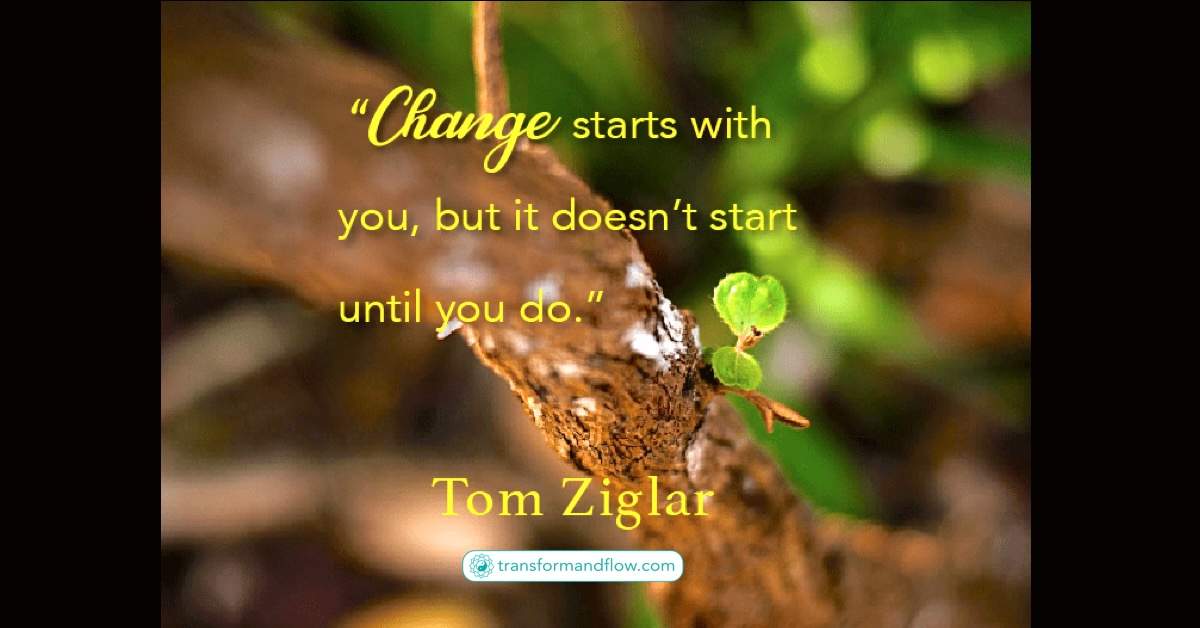Tom Ziglar’s powerful statement,
“Change starts with you, but it doesn’t start until you do,”
encapsulates a fundamental truth about personal transformation. We often harbor desires for change, envisioning a future where we are healthier, happier, or more successful. Yet, these desires remain mere fantasies until we translate them into tangible action. The ignition point of change lies not in mere contemplation, but in the deliberate, often challenging, act of doing.
This concept resonates deeply with psychological principles of self-efficacy and behavioral change. We can possess the strongest intentions, but without consistent effort, those intentions remain dormant.
The Psychology Behind Change: Why It’s Hard and How It Happens
Psychologists have long studied why some people struggle with change while others embrace it. One such study, conducted by Dr. James O. Prochaska and colleagues, developed the Transtheoretical Model of Change (TTM), which outlines six stages of change:
- Precontemplation – No intention of changing behavior.
- Contemplation – Awareness of the need for change, but no commitment.
- Preparation – Intent and planning for change.
- Action – Active modification of behavior.
- Maintenance – Sustaining the change long-term.
- Termination – The new behavior is fully integrated into life.
Read more: National Library of Medicine – Stages of Change Theory
The Psychology of Action: The Gap Between Intention and Behavior
The gap between intention and behavior is a well-studied phenomenon in psychology. One relevant area of research is the implementation intentions framework, which suggests that forming concrete “if-then” plans can significantly increase the likelihood of translating intentions into action. In essence, it’s about specifying when, where, and how you will perform a desired behavior.
For instance, instead of saying, “I want to exercise more,” you would create an implementation intention like, “If it’s Monday, Wednesday, or Friday at 7:00 AM, then I will go for a 30-minute run in the park.” This specificity helps bridge the gap between wanting to change and actually doing it.
Read more: leantime.io – Implementation Intentions: A Tried and True Approach to Accomplishing Your Goals
Five Practical Ways to Start the Process of Change
- Set Clear, Attainable Goals
Change begins with clarity. Define what you want to change and break it into small, achievable goals. Instead of “I want to be healthier,” specify “I will exercise for 30 minutes five times a week.” - Adopt a Growth Mindset
Dr. Carol Dweck’s research on the growth mindset shows that believing in one’s ability to develop skills leads to success. Instead of seeing challenges as failures, view them as opportunities to grow. (mindset health – Growth Mindset vs Fixed Mindset: How what you think affects what you achieve) - Seek Accountability and Support
Having a mentor, friend, therapist or coach to check in on your progress keeps you motivated. External encouragement and accountability make it harder to quit. - Take Immediate Action, No Matter How Small
Start today, even if it’s a tiny step. If you want to write a book, write one paragraph. If you want to lose weight, replace one unhealthy snack. Small actions compound into massive change. - Embrace Discomfort
Change is uncomfortable, but growth lies outside the comfort zone. Acknowledge fears, but push through them. Over time, the uncomfortable becomes familiar, and progress is made.
The Tetra-Lemma of Ignorance, Awareness, Light, and Dark
Consider a scenario where I have lost my will and am either consciously or unconsciously moving through an experience without intentional direction. This journey of transformation unfolds in five stages:
Stage 1: Ignorance & Dark
At this stage, I am completely unaware of my unconscious routines and their impact on myself and those around me. I continue through life without questioning my actions or their consequences.
Stage 2: Awareness & Dark
A shift begins—I start to sense that I would rather be in a different experience. However, I feel powerless, with no idea where to begin or how to change. This stage only emerges when my deeper self recognizes that I have the potential to evolve, even if I am not yet ready to act.
Stage 3: Ignorance & Light
Now, I decide that I must take action. I try various ways to change, experimenting with different approaches, yet nothing seems to “stick.” I may feel hopeful at times, only to slip back into old habits, unsure why real transformation eludes me.
Stage 4: Awareness & Light
Through persistence and experience, I eventually discover a method that works for me—something that resonates with my unique journey. With this, I regain control over my will and consciously shape my experience. The lessons learned in Stage 3 serve as stepping stones to this newfound clarity.
Stage 5: Freedom
Looking back, I realize I have transcended the issue entirely. What once seemed insurmountable is now a thing of the past, and I have mastered this part of myself. Yet, as I grow, my mind will naturally bring forth new challenges to move from Stage 1 to Stage 2, continuing the cycle of self-evolution.
We are always navigating multiple “issues” at different stages, but it’s important to remember that our consciousness only brings forward those challenges we are truly ready to face. Growth is an ongoing process, and with each cycle, we step further into our full potential.
Check this blog post for a deeper explanation Tetra-lemma of Transformation: Navigating the Cycles of Change
Conclusion
Tom Ziglar’s quote is a call to action. It reminds us that change is not a passive process; it requires active participation. While the desire for transformation may originate within us, it remains dormant until we take the first step. The journey of change is often challenging, demanding consistent effort and resilience. However, the rewards – improved well-being, increased confidence, and a greater sense of purpose – are immeasurable.
By defining our “why,” starting small, creating an action plan, seeking support, and embracing imperfections, we can bridge the gap between intention and action. We can transform our desires into tangible realities, empowering ourselves to live more fulfilling lives. The ignition point of change is now.
The power is within you, but the catalyst is your action. So, take that first step, and watch as your life begins to transform!


